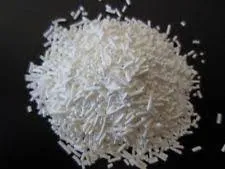
thickening agent for food
The Role of Thickening Agents in Food An In-Depth Exploration
Thickening agents are essential in the culinary world, playing a crucial role in the texture, appearance, and stability of various food products. From soups and sauces to desserts, these agents enhance the overall eating experience by providing the desired consistency. Understanding the various types of thickening agents, their functions, and applications can greatly benefit both home cooks and professional chefs.
What are Thickening Agents?
Thickening agents, also known as thickeners, are substances added to food to increase viscosity without significantly altering the taste. They work by absorbing water and swelling, creating a more substantial body in liquids. Common examples include starches, gums, pectin, and proteins. Each type has its unique characteristics and is suited for different applications in cooking and food production.
Types of Thickening Agents
1. Starches The most widely used thickening agents are derived from plants, such as corn, wheat, and potatoes. Cornstarch, for instance, is favored for its neutral flavor and ability to thicken quickly when heated. When dissolved in a cold liquid and then heated, the starch granules swell and trap water, creating a thickened sauce. However, starches can also break down under prolonged heat, so they are often added towards the end of cooking.
2. Gums These are polysaccharides that are sourced from natural sources, such as seaweed and seeds. Popular gum thickeners include xanthan gum and guar gum. They are effective at low concentrations and are often used in gluten-free recipes to mimic the texture provided by gluten. Gums are also cold-soluble, making them ideal for emulsions and salad dressings.
thickening agent for food

3. Pectin Found naturally in fruits, pectin is a crucial ingredient in making jams and jellies. It activates in the presence of sugar and acid, forming a gel-like consistency when cooled. Pectin is prized for its ability to create a stable structure in fruit preserves, making it a favorite among home canners and bakery professionals alike.
4. Proteins Certain proteins, such as gelatin and agar-agar, can also serve as thickening agents. Gelatin, derived from animal collagen, is used to create desserts like mousse and panna cotta. Agar-agar is a vegan alternative derived from seaweed and is excellent for thickening and gelling due to its ability to set at room temperature.
Applications in Cooking
The applications of thickening agents are vast and varied. In soups and sauces, they are used to achieve a velvety smooth texture that clings to food. For gravies, starch-based thickeners are often used to create a rich and hearty consistency. In the realm of baking, thickening agents help achieve the perfect custard or pie filling, adding body and stability to various confections.
Moreover, in the world of gluten-free cooking, thickeners play an essential role. They help compensate for the lack of gluten, providing structure and moisture retention in baked goods. For those with dietary restrictions, thickeners offer creative solutions to achieve traditional textures without compromising flavor.
Conclusion
Thickening agents are invaluable in the culinary arts, transforming ordinary recipes into culinary masterpieces through texture enhancement and stabilization. Whether for a rich gravy, a luscious dessert, or a gluten-free dish, choosing the right thickening agent can elevate the quality of food immensely. As culinary practices evolve, so do the applications and innovations surrounding thickening agents. Understanding their properties and uses can empower cooks to create delightful dishes that are not only delicious but also visually appealing and texturally satisfying. The next time you’re in the kitchen, consider the impact these agents can have on your culinary creations, and don’t hesitate to experiment with different types to discover your favorites.
-
Pure Sodium Dichloroisocyanurate Dihydrate | Powerful DisinfectantNewsAug.29,2025
-
Industrial Chemicals: Quality & Purity for Every IndustryNewsAug.28,2025
-
Nitrile Rubber Honoring Strict Production StandardsNewsAug.22,2025
-
Aspartame Ingredients Honoring Food Safety ValuesNewsAug.22,2025
-
Fertilizer for Balanced Plant NutritionNewsAug.22,2025
-
Cyanide Gold Processing with High Purity AdditivesNewsAug.22,2025
-
Formic Acid in Textile Dyeing ApplicationsNewsAug.22,2025
Hebei Tenger Chemical Technology Co., Ltd. focuses on the chemical industry and is committed to the export service of chemical raw materials.
-

view more DiethanolisopropanolamineIn the ever-growing field of chemical solutions, diethanolisopropanolamine (DEIPA) stands out as a versatile and important compound. Due to its unique chemical structure and properties, DEIPA is of interest to various industries including construction, personal care, and agriculture. -

view more TriisopropanolamineTriisopropanolamine (TIPA) alkanol amine substance, is a kind of alcohol amine compound with amino and alcohol hydroxyl, and because of its molecules contains both amino and hydroxyl. -

view more Tetramethyl Thiuram DisulfideTetramethyl thiuram disulfide, also known as TMTD, is a white to light-yellow powder with a distinct sulfur-like odor. It is soluble in organic solvents such as benzene, acetone, and ethyl acetate, making it highly versatile for use in different formulations. TMTD is known for its excellent vulcanization acceleration properties, which makes it a key ingredient in the production of rubber products. Additionally, it acts as an effective fungicide and bactericide, making it valuable in agricultural applications. Its high purity and stability ensure consistent performance, making it a preferred choice for manufacturers across various industries.





